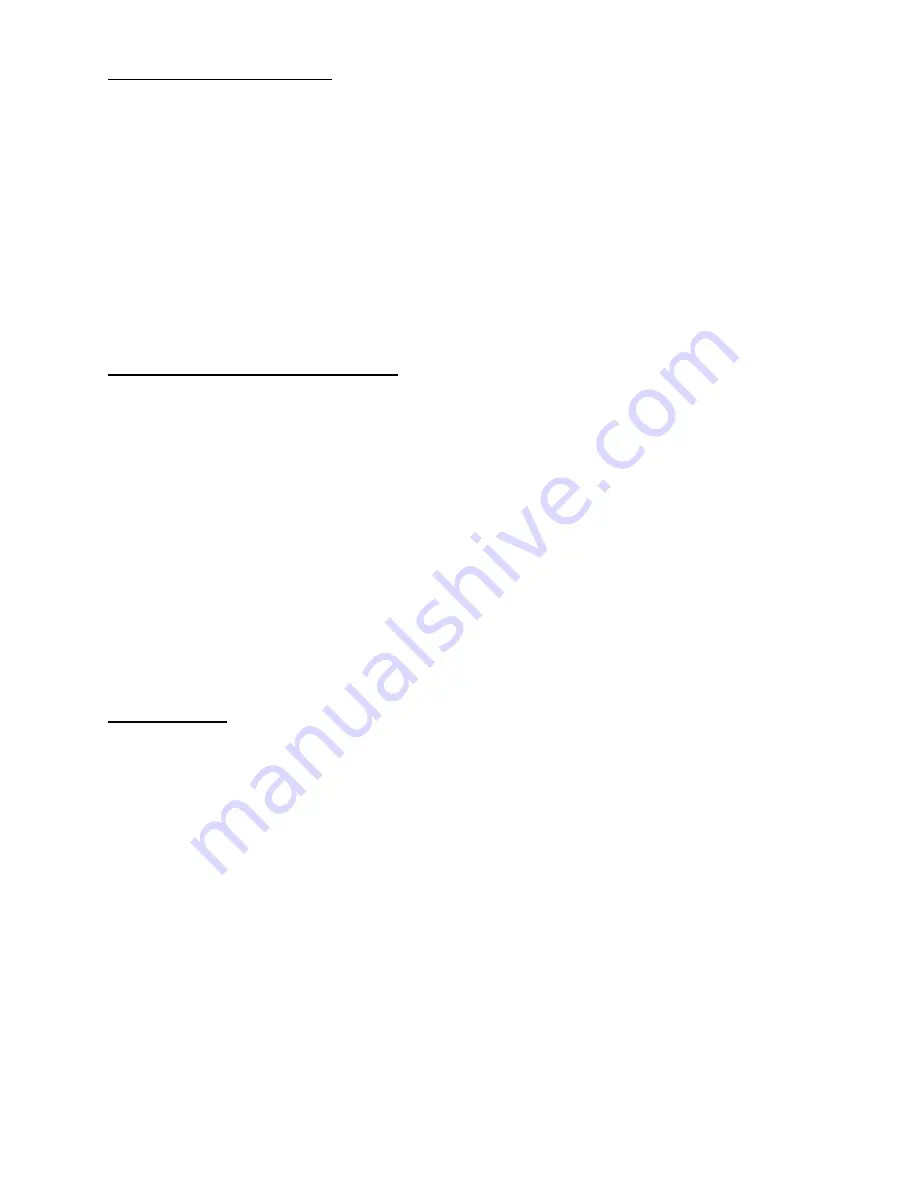
OVERHEATING PROBLEMS:
System overheats or operates above 200
o
F:
(Vmax)
1. Stop system and disconnect power.
2. Check the oil cooler and fan. Clean cooler externally with compressed air. Ensure that 12" of space is available in
front of the cooler and that the ambient temperature is below 110° F.
3. Check if the oil isolation valve is open.
4. Check if the oil solenoid valve (if installed) is working.
5. Ensure that the oil level is correct and that the pump is primed and filled with oil to the shaft centerline only.
6. Check if the temperature control valve (if installed) is working and that oil is flowing through the cooler.
Caution, hot oil!
7. Clean oil strainer.
8. Check if oil cooler is blocked internally with solids passed through from the process, clean if necessary.
Unit overheats on start-up in low ambient temperatures:
(Vmax)
1. Stop system and disconnect power
2. Oil tends to thicken in temperatures of 50
o
F and below. Place heat tape and insulation on the fluid seal line from the
heat- exchanger to the pump inlet.
3. Also insulate the seal-fluid solenoid valve (if installed).
NOISE AND VIBRATION PROBLEMS:
The system is making an abnormal noise or sound:
(Vmax)
1. Stop system and disconnect power.
2. Check the coupling and/or element for proper alignment. If worn or damaged, replace.
3. Check if the bearings are greased. Rotate the coupling by hand, which should rotate freely. If a rubbing noise or
binding is observed, contact authorized dealer.
4. Ensure that the oil level is correct and that the pump is primed and filled with oil to the shaft centerline only.
5. Check vacuum relief valve (if installed), check the setting and adjust as needed.
6. Check the inlet filter and clean if necessary. Pump will cavitate if filter is blocked.
7. Check if the inlet valve is closed. The pump will cavitate if inlet is closed.
8. Check vacuum level on vacuum gauge. Pump could cavitate as a result of a too high vacuum level.
System is vibrating excessively:
(Vmax)
1. Stop system and disconnect power.
2. Check the coupling and/or element for proper alignment. If worn or damaged, replace.
3. Check if the bearings are greased. Rotate the coupling by hand, which should rotate freely. If a rubbing noise or
binding is observed, contact authorized dealer.
4. Check if baseplate is properly supported. Uneven floor will distort baseplate, which could cause vibrating problems.
5. Check that the mounting bolts of pump, coupling, fan and cooler are not loose. Tighten as required.
6. Check belt alignment on belt drive systems.
OIL PROBLEMS:
System uses excessive oil or produces an oil-mist:
(Vmax)
1. Stop system and disconnect power.
2. Check the oil return line from the separator for blockage to ensure that oil flows from separator to vacuum pump.
3. Check if pump operates against high back-pressure (> 4 psig), if so replace oil separator element.
4. Vacuum level should be 15” Hg or higher. If not, consult authorized dealer.
5. Check for an excessive amount of water vapor carried over from the process.
Dekker Vacuum Technologies, Inc. – Vmax/13
21



































